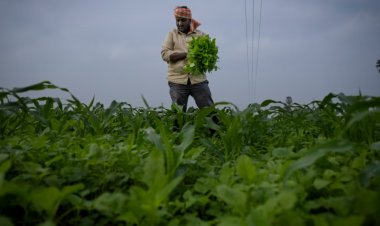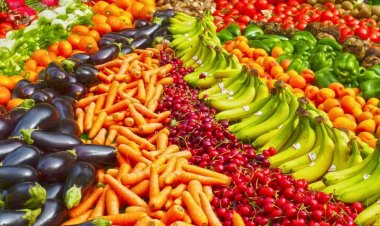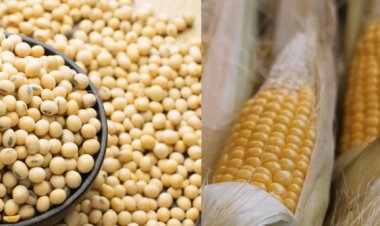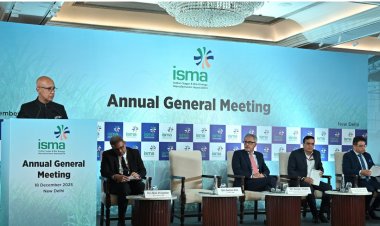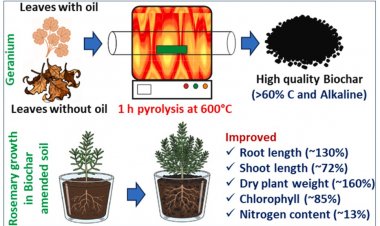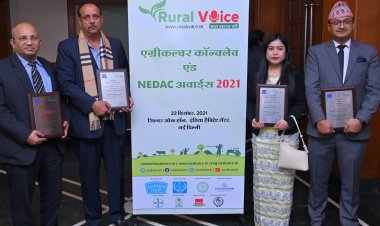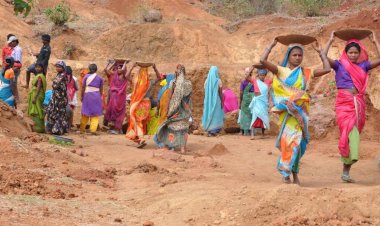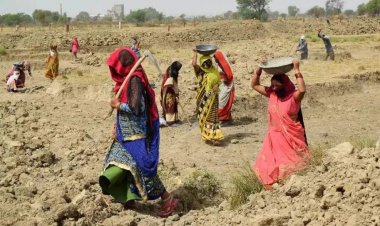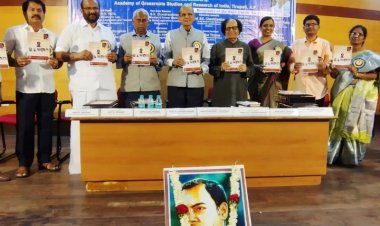Food subsidy critical for achieving SDGs
The decision to merge PMGKAY, which started 28 months back owing to Covid-19, with the NFSA scheme and now provide 5 kg grains free of cost to almost 81.35 crore is another step towards long-term sustainability, presuming that NFSA is likely to continue till 2030 with an aim to achieve SDGs. At the same time, a critical review as to whether all 81 crore (around 58 per cent) people proposed to be covered under the Act really need free ration is urgently warranted.
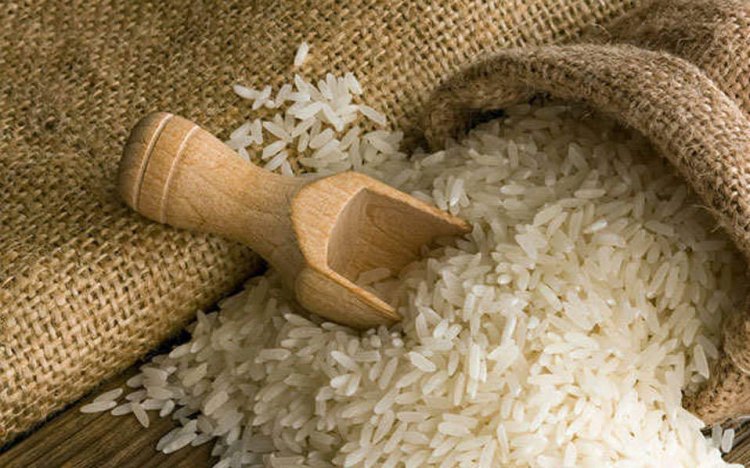
As per commitment to the United Nations (UN) to meet the Sustainable Development Goals (SDGs), India is required to have ‘no poverty’ and ‘zero hunger’ by 2030. Such a stupendous task definitely needs determined action and policy support from the government. The recent Cabinet decision to extend the food subsidy till the end of 2023 under the National Food Security Act (NFSA), 2013, also called food law, is indeed Prime Minister Narendra Modi’s bold step towards achieving SDGs. Thanks mainly to the Green, White, Blue and Rainbow revolutions, India has been able to achieve household food security and reduce poverty from earlier 70.0 per cent to now 16.4 per cent and also help in eliminating hunger to a major extent. Despite this, we still have 5.7mn children (around 40 per cent) below five years of age who are malnourished, as per a UNICEF report (May 2022). The main reasons for malnutrition are economic inequality, poverty, unaffordability of food, and lack of sanitation and clean drinking water.
Accordingly, the proposed free distribution of 5 kg foodgrains through the targeted public distribution system (TPDS) to 81.35 crore people, as pronounced by Piyush Goyal, Minister of Consumer Affairs, Food and Public Distribution, is indeed laudable. Additionally, the provision of 35 kg of foodgrains (21 kg rice + 14 kg wheat) to very poor families under the Antyodaya Anna Yojana (AAY) is expected to cost the exchequer around 2 lakh crores annually. No doubt, these initiatives will ensure both economic and ecological access to food for the poor.
Globally, NFSA is considered a unique Parliamentary Act of the Government of India to address the concern of the poor for their food and nutrition security, economic stability, long-term health benefits, women empowerment and environmental security. In this context, India is also fortunate to have a comfortable buffer stock position (in the range of 50-70mn tonnes during the last one decade), whereas, according to the World Food Programme (WFP), the availability of food is becoming a major concern for many developing countries.
During the Covid-19 pandemic, globally around 150mn additional people, above the earlier 800mn below poverty line, have become food-insecure. Prior to Covid-19, 815mn people were estimated to be hungry, and every third person was malnourished, reflecting a food system out of balance. The present distress migration is also at an unprecedented high level in the past 70 years, threatening the social cohesion and cultural traditions of rural people due to limited access to land and water resources. According to WFP, a global food crisis fuelled by conflict, climate shocks and the Covid-19 pandemic has emerged because of the ripple effects of the war in Ukraine driving rising prices of food, fuel and fertilizers. As a result, millions of people across the world are at risk of being driven into starvation unless action is taken on priority by the developing countries to respond together and at scale.
Fortunately, in India, in addition to NFSA and AAY, we have a National Nutrition Mission (NNM), also called the POSHAN Abhiyan, aiming to reduce the number of stunted children to 25 per cent. Also, effective implementation of the Mid-Day Meal Scheme (1995), with a strategy around increased use of milk, pulses and also soybean having double the protein (40 per cent) than all pulses, will obviously help overcome the problem of malnourishment among children.
The decision to merge the PM Garib Kalyan Anna Yojna (PMGKAY), which started 28 months back owing to Covid-19, with the NFSA scheme and now provide 5 kg grains free of cost to almost 81.35 crore is another step towards long-term sustainability, presuming that NFSA is likely to continue till 2030 with an aim to achieve SDGs. At the same time, a critical review as to whether all 81 crore (around 58 per cent) people proposed to be covered under the Act really need free ration is urgently warranted.
Further, it is worth appreciating that support under Mahatma Gandhi National Rural Employment Guarantee Scheme (MGNREGS), started in 2006, with a current outlay of Rs 98,000 crore, has helped reduce poverty by a third (32 per cent).The smallholders and marginal farmers (with < 2 ha), tilling around 47.4 per cent of total cultivable land and accounting for nearly 86.2 per cent of the 146mn farm families and for more than 50 per cent of the total agricultural production, are vital not only for India’s agrarian economy (10th Agriculture Census, 2015-16) but also for alleviating the current problems of hunger and poverty in the country.
It must be recognized that SDGs do present a unique opportunity for the agricultural sector to get aligned to achieving a better tomorrow as we do have the largest number of undernourished and poor people in the world. Therefore, the current pace of achieving SDGs will have to be accelerated through higher agricultural growth. Obviously, there is no room for complacency. It is imperative, therefore, that high priority be accorded to agricultural research for development (AR4D), with enhanced budgetary allocation to ICAR, which unfortunately has remained stagnant for almost the last one decade. On the contrary, returns from investment in AR4D are 10-15 times, much higher than any other sector, be it education, energy, road, transport or infrastructure.
In view of the above, SDGs are both an opportunity and a future vision for India. It is also quite evident now that for meeting SDGs at the global level, India emerges at the centre stage requiring urgent action to achieve them well in the targeted time (2030), failing which, the UN targets would probably not be met globally. In view of this, a well-designed strategy with a well-monitored implementation plan is warranted around:
- Scaling agricultural growth in a Mission Mode approach around: (i) promoting nutri-rich high-yielding varieties (HYVs) and hybrids, (ii) adoption of genetically modified (GM) food crops such as mustard, soybean and maize, (iii) crop diversification and conservation agriculture for sustainable intensification, (iv) promoting secondary and specialty agriculture, and (v) using local food systems ecoregion-wise, with emphasis on farming systems around crops, horticulture, livestock, fishery, agro-forestry, etc.;
- Providing an enabling policy environment and institutional infrastructure for improving sustainable development index (SDI) in the regions that remained bypassed by the Green Revolution but otherwise offer great potential, being rich in natural resources so critical for accelerated agricultural growth; and
- Revisiting and strengthening the ongoing national programmes aiming to ensure rural credit, health insurance, crop and livestock insurance, housing for the poor, improved and efficient irrigation/micro-irrigation systems, construction of village godowns, youth skill development and self-employment, need-based fertilizer use based on soil test analysis, linking farmers to markets, including eNAM, etc.
In conclusion, time is short and we need to act fast to achieve SDGs for better food, nutrition and environmental security for all.
(A Padma Bhushan awardee, the author is Chairman, TAAS and former Director General, ICAR and Secretary, DARE and former President, Indian Science Congress.)



 Join the RuralVoice whatsapp group
Join the RuralVoice whatsapp group


















